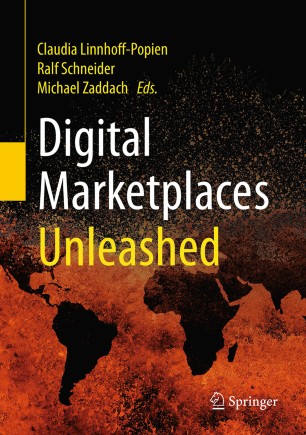 |
Dr. Valentin Protschky Lehrstuhl für Mobile und Verteilte Systeme Ludwig-Maximilians-Universität München, Institut für Informatik Oettingenstraße 67 Raum U 160 Telefon: +49 89 / 2180-9163 oder extern: +49 89 / 382-35051 Fax: +49 89 / 2180-9148 |
Aufgabengebiet
Fahrerassistenz
Mobilitätsdienste
Verkehrsanalyse
Traffic Light Assistance
Crowdsourcing
Car-to-X Kommunikation
Sprechstunde:
auf Anfrage
Publikationen
2015
- V. Protschky, S. Feit, and C. Linnhhoff-Popien, „On the Potential of Floating Car Data for Traffic Light Signal Reconstruction,“ in IEEE 81st Vehicular Technology Conference (VTC-Spring 2015), 2015, pp. 1-5. doi:10.1109/VTCSpring.2015.7145974
[BibTeX]@inproceedings{7145974, title = {On the Potential of Floating Car Data for Traffic Light Signal Reconstruction}, author = {Valentin Protschky and Stefan Feit and Claudia Linnhhoff-Popien}, booktitle = {IEEE 81st Vehicular Technology Conference (VTC-Spring 2015)}, year = {2015}, pages = {1-5}, doi = {10.1109/VTCSpring.2015.7145974}, owner = {vprotschky}, timestamp = {2015.09.08} } - V. Protschky, S. Feld, and M. Wälischmiller, „Traffic Signal Adaptive Routing,“ in IEEE 18th International Conference on Intelligent Transportation Systems (ITSC 2015), 2015, pp. 450-456.
[BibTeX] [Abstract]
The knowledge of future Signal Phase and Timing information (SPaT) of traffic lights ahead enables a vast number of driving assistance functions, such as Green Light Optimal Speed Control (GLOSA), Red Light Duration Advisory (RLDA) or Traffic Signal Adaptive routing (TSA routing). The purpose of TSA routing is to reduce the travel time by choosing a route that is possibly longer than the shortest one but has less red lights. Whereas GLOSA and RLDA are quite easy to implement from a scientific point of view, TSA routing presents a certain challenge: first of all, TSA routing necessitates predictions on future signal states on a wider look in the future than GLOSA and RLDA, a possible reason why this field of research still seems rather unexplored. Second, there are still many unresolved issues, such as the inadequacy of graphs for TSA-routing, or proper traffic load estimations. In this paper, we present a fully functioning model for TSA routing on the basis of our forgoing research on the prediction of future signal states and address the question of practical usability by evaluating our model under realistic conditions. We analyze, among other things, the impact of partial knowledge on traffic light’s future signal states and the impact of different traffic loads on TSA routes by means of a test field in Munich, Germany. We describe necessary modifications of the underlying transportation network’s graph structure and shortest path routing algorithm to allow routing under consideration of future signal states of traffic lights. We show that, albeit there are many erratic aspects in traffic and signal states, TSA routing still reaches a significant travel time gain over usual routing in our test field.
@inproceedings{protschky2015traffic, title = {Traffic Signal Adaptive Routing}, author = {Valentin Protschky and Sebastian Feld and Michael Wälischmiller}, booktitle = {IEEE 18th International Conference on Intelligent Transportation Systems (ITSC 2015)}, year = {2015}, pages = {450-456}, abstract = {The knowledge of future Signal Phase and Timing information (SPaT) of traffic lights ahead enables a vast number of driving assistance functions, such as Green Light Optimal Speed Control (GLOSA), Red Light Duration Advisory (RLDA) or Traffic Signal Adaptive routing (TSA routing). The purpose of TSA routing is to reduce the travel time by choosing a route that is possibly longer than the shortest one but has less red lights. Whereas GLOSA and RLDA are quite easy to implement from a scientific point of view, TSA routing presents a certain challenge: first of all, TSA routing necessitates predictions on future signal states on a wider look in the future than GLOSA and RLDA, a possible reason why this field of research still seems rather unexplored. Second, there are still many unresolved issues, such as the inadequacy of graphs for TSA-routing, or proper traffic load estimations. In this paper, we present a fully functioning model for TSA routing on the basis of our forgoing research on the prediction of future signal states and address the question of practical usability by evaluating our model under realistic conditions. We analyze, among other things, the impact of partial knowledge on traffic light's future signal states and the impact of different traffic loads on TSA routes by means of a test field in Munich, Germany. We describe necessary modifications of the underlying transportation network's graph structure and shortest path routing algorithm to allow routing under consideration of future signal states of traffic lights. We show that, albeit there are many erratic aspects in traffic and signal states, TSA routing still reaches a significant travel time gain over usual routing in our test field.}, owner = {vprotschky} } - V. Protschky, C. Ruhhammer, and S. Feit, „Learning Traffic Light Parameters with Floating Car Data,“ in IEEE 18th International Conference on Intelligent Transportation Systems (ITSC 2015), 2015.
[BibTeX]@inproceedings{protschky2015learning, title = {Learning Traffic Light Parameters with Floating Car Data}, author = {Valentin Protschky and Christian Ruhhammer and Stefan Feit}, booktitle = {IEEE 18th International Conference on Intelligent Transportation Systems (ITSC 2015)}, year = {2015}, owner = {vprotschky}, timestamp = {2015.09.08} } - V. Protschky, P. Seifert, and S. Feit, „Stop Line Detection Using Satellite-Image Segmentation,“ in IEEE 81st Vehicular Technology Conference (VTC-Spring 2015), 2015, pp. 1-5. doi:10.1109/VTCSpring.2015.7146110
[BibTeX]@inproceedings{7146110, title = {Stop Line Detection Using Satellite-Image Segmentation}, author = {Valentin Protschky and Paul Seifert and Stefan Feit}, booktitle = {IEEE 81st Vehicular Technology Conference (VTC-Spring 2015)}, year = {2015}, pages = {1-5}, doi = {10.1109/VTCSpring.2015.7146110}, owner = {vprotschky}, timestamp = {2015.09.08} }
2014
- D. Irschick, V. Protschky, and F. Schweizer, „Kooperative Systeme im Strassenverkehr auf Basis einer Client-Server-Architektur/Cooperative traffic services using client-server architectur,“ Strassenverkehrstechnik, vol. 58, iss. 10, 2014.
[BibTeX]@article{irschik2014kooperative, title = {Kooperative Systeme im Strassenverkehr auf Basis einer Client-Server-Architektur/Cooperative traffic services using client-server architectur}, author = {D. Irschick and V. Protschky and F. Schweizer}, journal = {Strassenverkehrstechnik}, year = {2014}, number = {10}, volume = {58}, owner = {vprotschky}, timestamp = {2015.09.08} } - V. Protschky and S. Feit, „Traffic Light Assistance – Ein innovativer Mobilitätsdienst im Fahrzeug,“ in Marktplätze im Umbruch – Digitale Strategien fuer Services im Mobilen Internet, C. Linnhoff-Popien, M. Zaddach, and A. Grahl, Eds., Springer Berlin Heidelberg, 2014.
[BibTeX]@incollection{protschkymarktplaetze, title = {Traffic Light Assistance -- Ein innovativer Mobilitätsdienst im Fahrzeug}, author = {Valentin Protschky and Stefan Feit}, booktitle = {Marktplätze im Umbruch - Digitale Strategien fuer Services im Mobilen Internet}, publisher = {Springer Berlin Heidelberg}, year = {2014}, editor = {Claudia Linnhoff-Popien and Michael Zaddach and Andreas Grahl}, series = {Xpert.press}, owner = {vprotschky}, timestamp = {2015.09.08} } - V. Protschky, S. Feit, and C. Linnhhoff-Popien, „Extensive Traffic Light Prediction under Real-World Conditions,“ in IEEE 80th Vehicular Technology Conference (VTC-Fall 2014), 2014, pp. 1-5. doi:10.1109/VTCFall.2014.6965983
[BibTeX]@inproceedings{6965983, title = {Extensive Traffic Light Prediction under Real-World Conditions}, author = {Valentin Protschky and Stefan Feit and Claudia Linnhhoff-Popien}, booktitle = {IEEE 80th Vehicular Technology Conference (VTC-Fall 2014)}, year = {2014}, pages = {1-5}, doi = {10.1109/VTCFall.2014.6965983}, owner = {vprotschky}, timestamp = {2015.09.08} } - V. Protschky, K. Wiesner, and S. Feit, „Adaptive traffic light prediction via Kalman filtering,“ in IEEE Intelligent Vehicles Symposium 2014, 2014, pp. 151-157. doi:10.1109/IVS.2014.6856394
[BibTeX]@inproceedings{6856394, title = {Adaptive traffic light prediction via Kalman filtering}, author = {Valentin Protschky and Kevin Wiesner and Stefan Feit}, booktitle = {IEEE Intelligent Vehicles Symposium 2014}, year = {2014}, pages = {151-157}, doi = {10.1109/IVS.2014.6856394}, owner = {vprotschky}, timestamp = {2015.09.08} }
2012
- M. Dürr, V. Protschky, and C. Linnhoff-Popien, „Modeling Social Network Interaction Graphs,“ in IEEE/ACM International Conference on Advances in Social Networks Analysis and Mining (ASONAM 2012), Washington, DC, USA, 2012, pp. 660-667. doi:http://dx.doi.org/10.1109/ASONAM.2012.110
[BibTeX]@inproceedings{durr2012a, title = {Modeling Social Network Interaction Graphs}, author = {Michael Dürr and Valentin Protschky and Claudia Linnhoff-Popien}, booktitle = {IEEE/ACM International Conference on Advances in Social Networks Analysis and Mining (ASONAM 2012)}, year = {2012}, address = {Washington, DC, USA}, pages = {660-667}, publisher = {IEEE Computer Society}, doi = {http://dx.doi.org/10.1109/ASONAM.2012.110}, isbn = {978-0-7695-4799-2}, numpages = {8}, owner = {mduerr} }

